This is part of an ongoing series about shrine buildings abridged and adapted from the introduction to Shinto Shrines by Joseph Cali and John Dougill. It follows on from Part 3, which covered the main structures of a shrine. (For the full-length version, please refer to the book.)
******************************************************************************
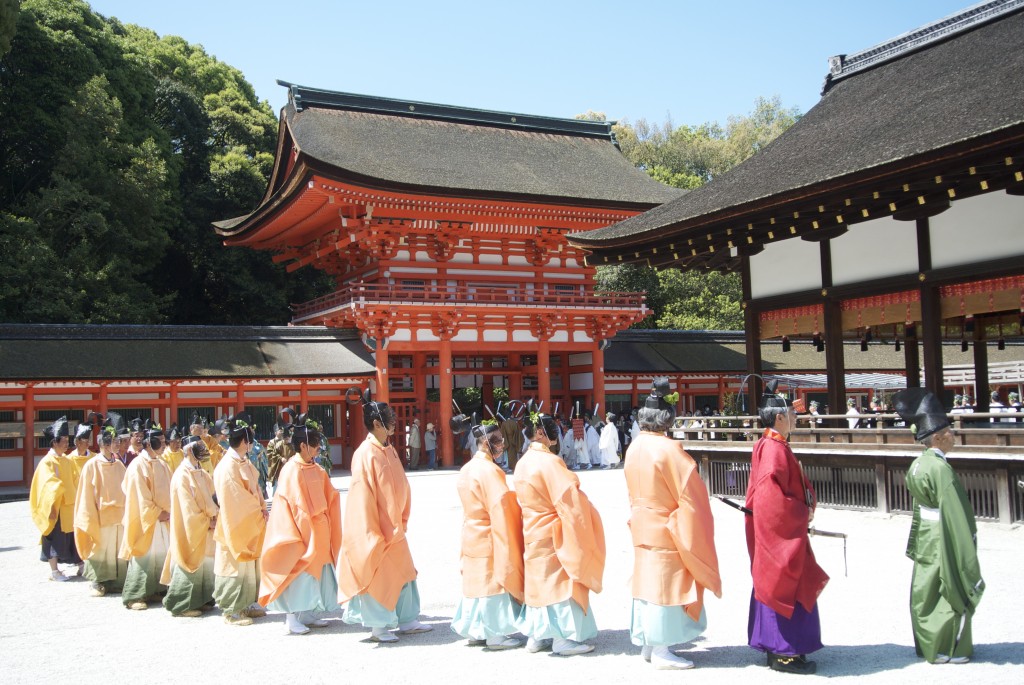
The outer courtyard of Shimogamo Jinja, with festival participants circling around the kaguraden. The stage is used for occasional performances and ceremonies.
Kaguraden: A raised, covered, and open-sided pavilion that is used as a stage for sacred dance (kagura), court dance (bugaku), and court music (gagaku). Also called a maidono, maiden, or buden. The kaguraden is usually built in front of but separate from the haiden. It is sometimes used for other rituals and performances. Some believe its history preceded and inspired the construction of the haiden.
Shamusho: The shrine administration building, usually also the place where amulets are sold.
Tamagaki and mizugaki: Types of fence employed at shrines. The tamagaki is generally a see-through picket fence, sometimes combining vertical and horizontal elements. Stone is sometimes employed, but wood is most common. Such fences surround the honden and are also used around the entire shrine grounds. When more than one fence is used for the honden, the inner fence is usually called a mizugaki, and there is usually no open space between the horizontal or vertical elements. Some fences are quite decorative while others are plain. Some also have roofs.
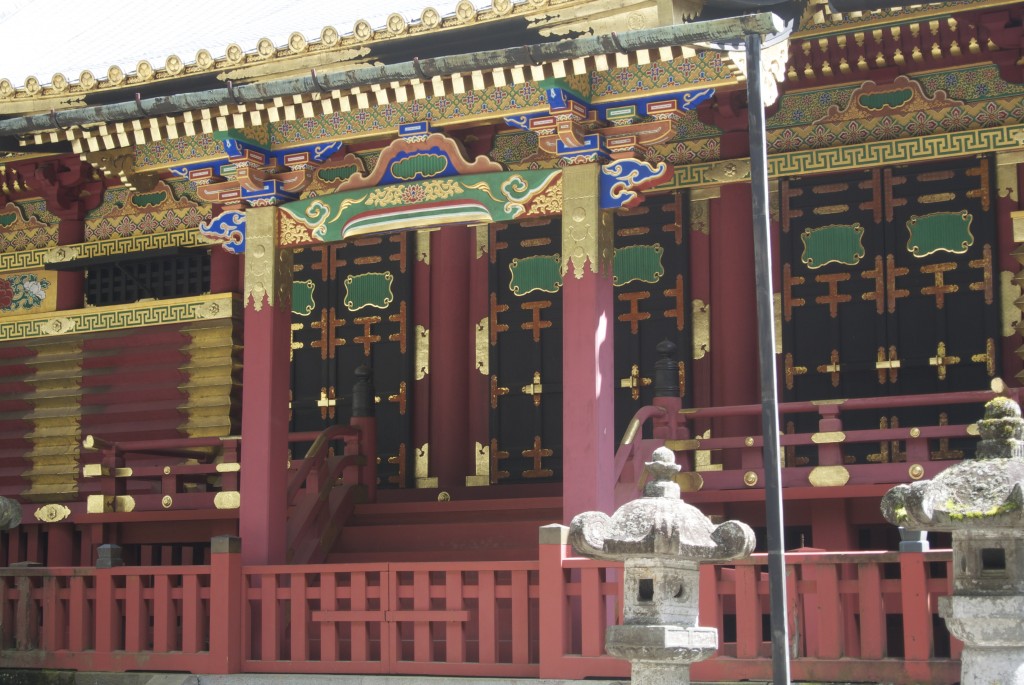
Part of the Tosho-gu at Nikko, showing a tamagaki fence in front of the shrine
Kairo: This is essentially a corridor with a large roof, which acts as a covered walkway. There is no wall along the inner side, where the roof is supported on pillars. It usually begins at the romon and encircles the entire inner grounds. The outer side is often solid, punctuated with windows along the upper half. The form originated from Buddhist temples, but it is a common sight at shrines as well.
Shimenawa, shide, and gohei: A shimenawa is a thin or thick twisted rope made of straw, and indicates sacredness. It is usually strung around an object or hung directly in front of a space. Shide are hanging white paper streamers, folded in a sort of zigzag and attached to the shimenawa at intervals. A number of shide made of paper or cloth and attached to a stick is called a gohei.
Shinboku: A sacred or divine tree, usually located adjacent to the honden. It may be extremely old and considered a dwelling place of kami. The tree is easy to identify, as it has shimenawa and shide paper streamers.
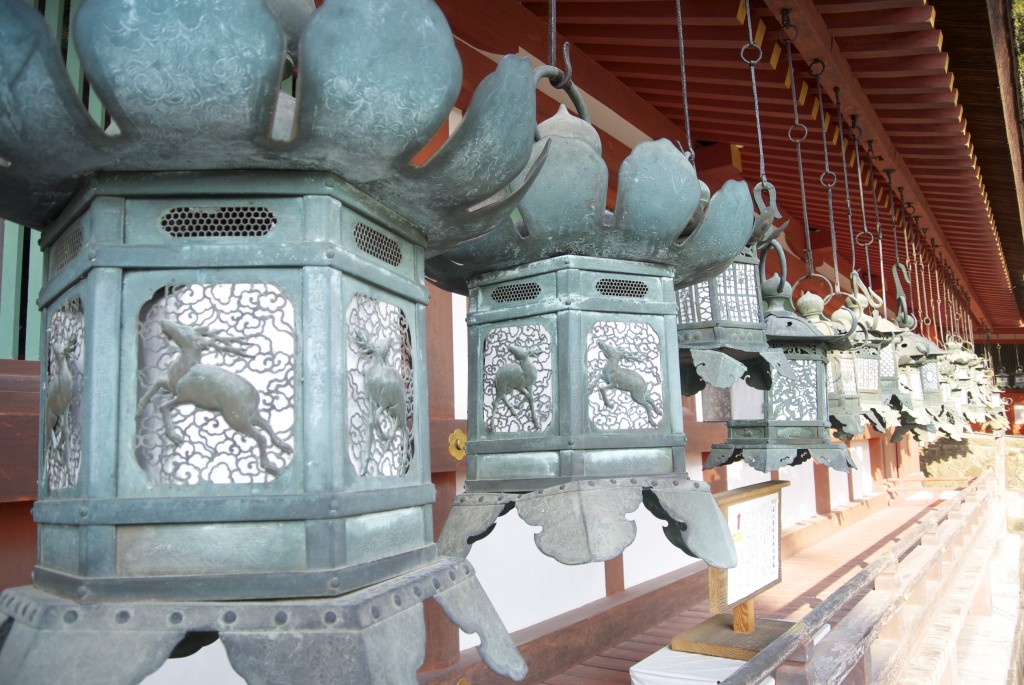
Hanging bronze lanterns at Kasuga Taisha in Nara. bearing the shrine's deer emblem.
Toro: Originally votive lanterns imported from Korea, used for offering fire or light to the Buddha. The custom was for a single lantern to be placed in front of the temple. It quickly spread to shrines and then Japanese gardens. Made of bronze, stone, or wood, the lanterns can be of a hanging or standing type. The most common type is the stone lantern (ishidoro). Such lanterns were donated by worshippers as offerings to the kami, which is why some large shrines such as Kasuga Taisha in Nara and Toshogu in Nikko have literally thousands.
Komainu, kitsune, deer: “Korean dogs” (komainu) are a pair of guardian figures. Despite their name, they originated in China or possibly India, and rather than dogs they represent lions said to ward off evil spirits. Typically one figure has the mouth open and one closed, expressing the Sanskrit sounds a-un (alpha and omega). The two guardian kings (nio) that stand in front of Buddhist temples serve the same purpose (though komainu are also found there). At Kasuga shrines komainu are replaced by deer. At Inari shrines, the komainu are replaced by foxes (kitsune), because of the belief that they guide the mountain kami when it descends to the fields. The posture of the foxes (open and closed mouth) and the purpose of warding off evil are the same as the komainu, but they may also hold a “key to the rice granary” in the paw (Inari is a kami of food, especially rice).
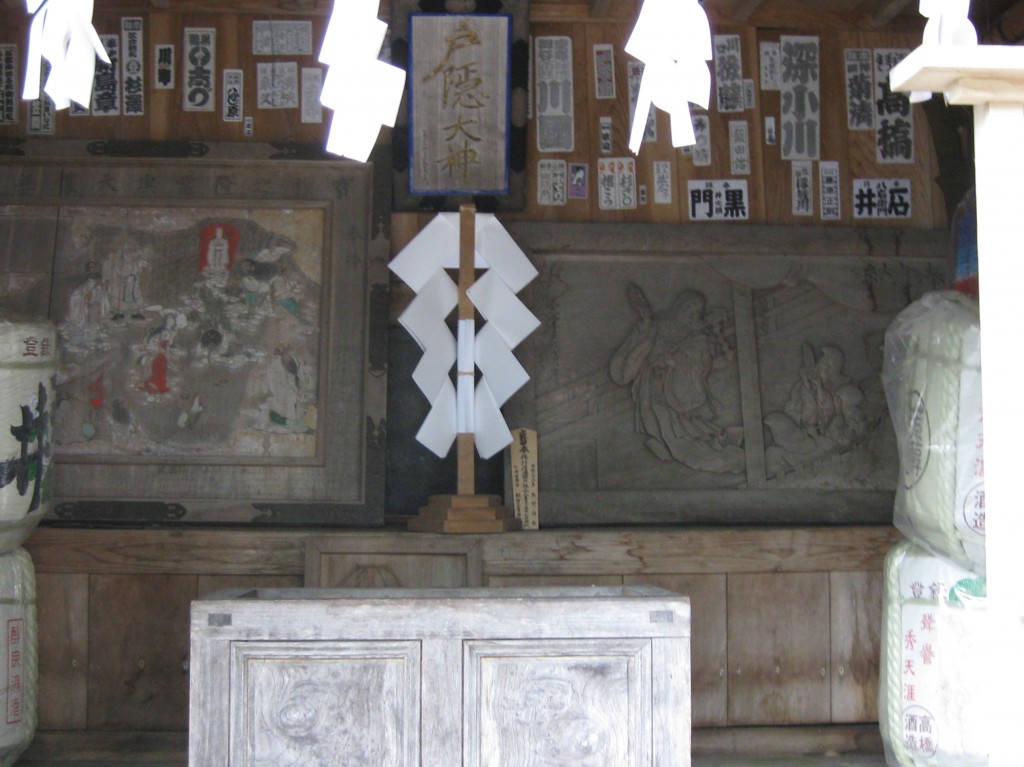
Gohei made of paper strips called shide attached to a central upright. It symbolises the descent of the kami (thought to be in the form of lightning.)
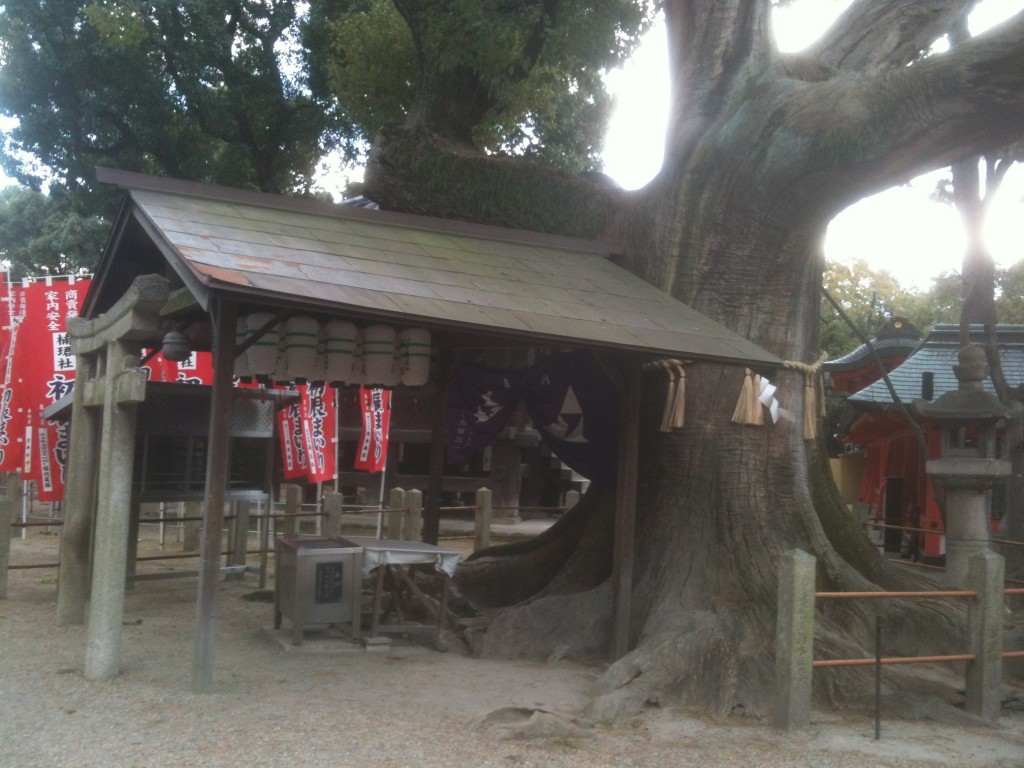
Direct worship of a 'shinboku' sacred tree at Sumiyoshi Taisha, Osaka
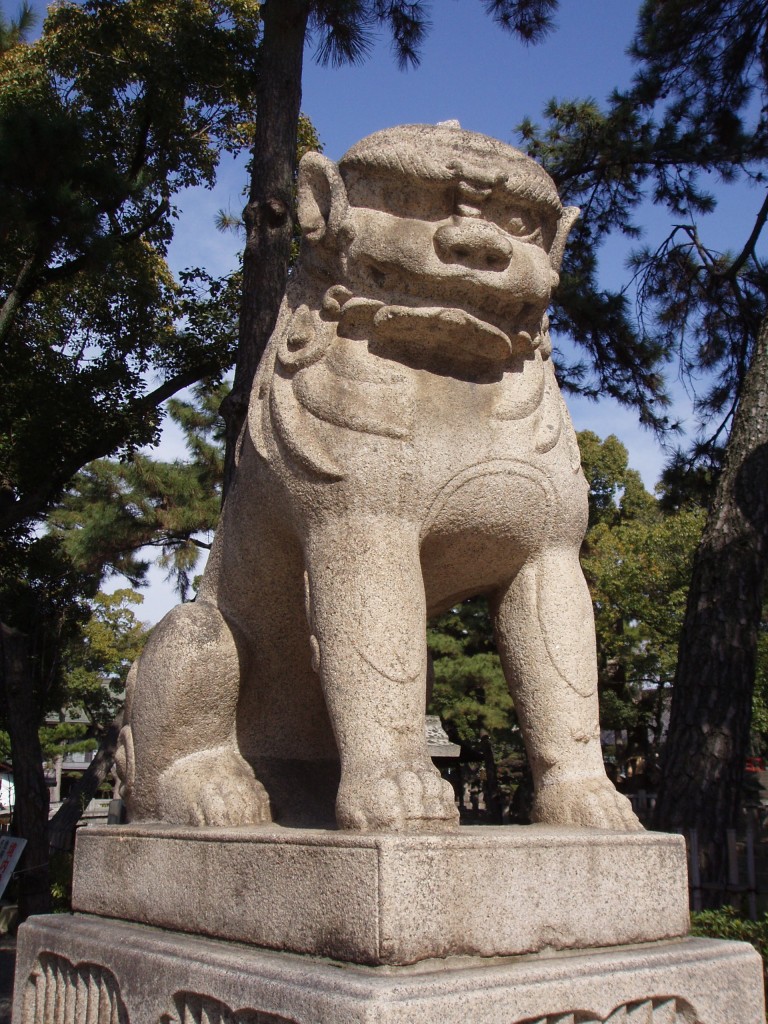
A striking komainu guardian at Sumiyoshi Taisha, Osaka

Hi John, Great overview of the features of a shrine. In Kyoto there are a few other animals which protect shrines and display the “ah” “un” open and closed mouths. At Okazaki Shrine we can see two rabbits, Komausagi. At Go’o Shrine next to Gosho there are two Inoshishi guarding the shrine. Otoyo Shrine along the Philosopher’s Path has two mice, Komanezumi, and at a sub-shrine inside there are two monkeys.
Finally, up north at a Hachimangu Shrine near Shugakuin there are two pigeons instead of Komainu.
Hi Paul, thanks for that. I once saw a nice magazine spread about all the animal guardians at Kyoto shrines. It will make an excellent feature in the great Kyoto website which I hope one day you will find time to do…